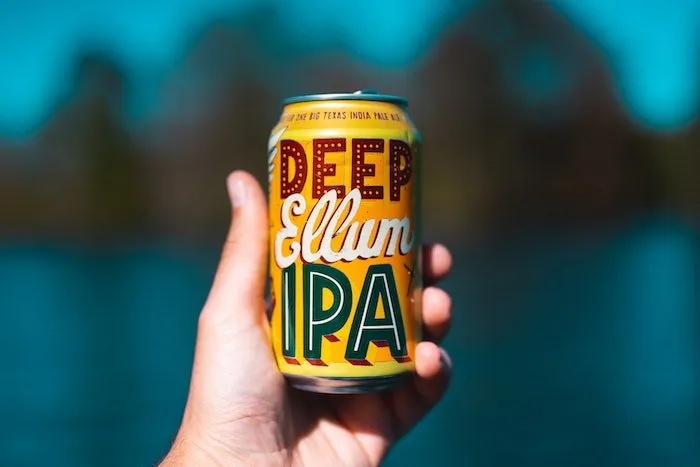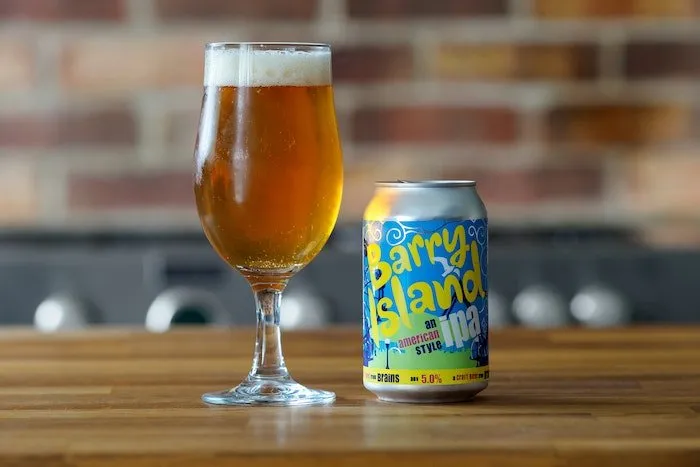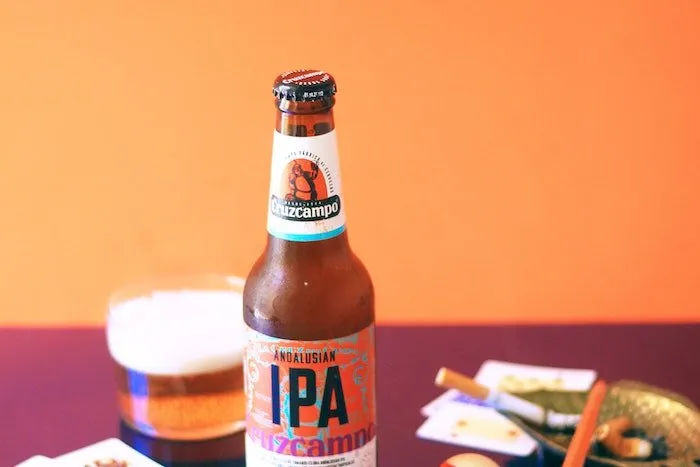Are you curious to find out how many IPAs it takes for an average person to get drunk? It’s important to understand the effects of alcohol and how your body responds when consuming beer, especially IPA beers. With so many different types of IPAs available, it can be challenging to determine how much is too much for one individual.
In this blog post we will explore factors such as weight, height, sex and age that impact each individual’s reaction when drinking multiple IPAs in order to get drunk. We’ll also discuss Alcohol Content of IPA beers versus other types of beers and provide examples popular brands with their respective alcohol content levels. Finally we’ll talk about responsible drinking tips not only when enjoying a few IPAs but any type of alcoholic beverage.
Table of Contents:
- How Many IPAs Does it Take to Get Drunk?
- What is an IPA Beer?
- What is the Difference Between an IPA and Other Types of Beer?
- How Can I Enjoy IPAs Responsibly?
- FAQs in Relation to How Many Ipas to Get Drunk
- Conclusion
How Many IPAs Does it Take to Get Drunk?

Typically, it takes four to five IPAs beers for an average-sized adult man to get intoxicated, but it takes two to four for an average-sized woman. Depending on a person’s weight and height, different amounts of alcohol are absorbed by the body and cause different effects.
One factor is body weight, as heavier people generally require more drinks than lighter people to reach the same level of intoxication. Additionally, food intake can affect alcohol absorption rate; eating before or while drinking slows down the process of getting drunk. Gender, too, can influence the speed of intoxication; typically, females become inebriated quicker than males due to dissimilarities in metabolic rate and body composition.
When discussing IPA beers specifically, their alcohol content varies greatly depending on the brand and type of beer being consumed. Generally, IPAs may range from 5-15% ABV, though some countries have laws that limit the strength of IPA beers to 6% or lower.
Popular brands such as Sierra Nevada’s Torpedo Extra IPA have an ABV of 7.2%, whereas Dogfish Head 90 Minute Imperial IPA has 9%. It should also be noted that certain countries may impose stricter regulations when it comes to maximum allowable ABV levels for different types of beer styles – for example, German law limits IPAs sold within its borders at 6% ABV or less.
No matter what type or brand of alcohol you choose, it is essential to drink responsibly and be aware that excessive consumption can lead to severe health risks and even death. To ensure safety, imbibers should sip their IPAs slowly, alternate with non-alcoholic drinks, avoid mixing types of alcohol and never drive after drinking.
What is an IPA Beer?
Originating in England during the late 1700s, India Pale Ale (IPA) is a type of beer that has since become widely-consumed around the world. It has since become one of the most popular and widely-consumed styles of beer around the world. IPA’s are renowned for their intense hoppiness and high ABV, which can go from 5% to 7%.
An IPA is a type of ale with an elevated bitterness level and alcohol concentration, commonly associated with citrusy aromas and tastes plus a notable bitter aftertaste. It’s usually characterized by citrusy aromas and flavors as well as a distinctively bitter finish.
IPAs are typically golden or copper colored with medium body and moderate carbonation levels. They have intense aromas of citrus fruits such as grapefruit or orange along with floral notes from the hops used during brewing process. On top of this they also have pronounced bitterness from both malt and hops which gives them their signature taste profile that sets them apart from other types of beers like lagers or stouts .
What is the Difference Between an IPA and Other Types of Beer?

What makes an IPA distinct from other brews? The answer lies in several factors, including alcohol by volume (ABV), flavor profiles, bitterness levels, and color.
ABV Levels: IPA v Other Types of Beer
ABV is the measurement used to determine how much alcohol content is present in any given type of alcoholic beverage. IPAs typically have higher ABV levels than lagers and stouts, with most IPAs ranging from 6-10% while the majority of lagers are at 4-5%. For example, most lagers contain around 4-5% ABV while many IPAs range from 6-10%. IPAs, with their higher ABV levels than other beer styles, pack more alcohol in one 12 oz serving compared to lagers or stouts.
Flavor
Flavor distinctions can be very different between beer varieties, contingent on the components employed in brewing and fermentation. Generally speaking though, IPAs tend to be very hoppy with notes ranging from citrusy grapefruit flavors all the way through piney resinous hop character. On the other hand, stouts usually have roasted coffee notes along with chocolate and caramel flavors while lagers typically feature more subtle malt sweetness without being overly bitter like an IPA would be.
Craft brewers may opt to use less hops in their IPAs, resulting in a lower bitterness level than traditional styles such as pale ales or double/imperials which can reach IBU scores of up to 70+ depending on the recipe. This provides an opportunity for those looking for a more subtle hop character without overwhelming bitterness. Keywords: Craft Brewers, Hops, Bitterness Level, Pale Ales, Double/Imperials, Recipe
Color
Beer color is determined by malts used during production, so you can expect lighter colored brews such as pilsners or wheat beers while darker ones like porters might appear almost blackish at times. This does not necessarily mean they are stronger either, since some light ales may still pack quite a punch despite having paler hues than others.
How Can I Enjoy IPAs Responsibly?
IPAs are a popular beer style among craft beer enthusiasts. With their intense taste and high ABV, it’s important to be mindful of how much you’re drinking when enjoying IPAs. That’s why it’s important to understand your limits when drinking IPAs and practice responsible consumption.
Factors like body mass, gender, sustenance consumed prior to imbibing, the kind of IPA (single or double-hop) and individual alcohol tolerance can all be key in grasping your drinking limits. Knowing these variables can help you determine how many IPAs you should drink before reaching intoxication levels.
In terms of alternatives to drinking IPAs, there are plenty of options available including non-alcoholic beers or other low ABV drinks like kombucha or hard seltzer. These beverages offer similar flavor profiles without the risk of getting too drunk too quickly. Additionally, some craft breweries now offer “session” beers which have lower ABVs than regular IPAs so they can still provide a flavorful experience while avoiding overconsumption.
Limiting your drinking time, switching between alcoholic and non-alcoholic drinks, and monitoring the type of beer consumed are strategies to dodge intoxication. This allows one to gauge potential effects from each individual beverage rather than lumping them all together into one big session where everything gets muddled together after awhile. Doing this helps prevent further intoxication beyond just an average buzzed feeling and can potentially avoid serious health issues down the line if done repeatedly over time.
Finally, staying hydrated is key when enjoying any type of alcoholic beverage but especially with higher ABV beers like an IPA due to its relatively strong taste profile compared with lighter lagers or pilsners etcetera. Having water handy will help reduce dehydration caused by excessive amounts imbibed, thereby allowing more enjoyable experiences overall during social gatherings involving said refreshments.
FAQs in Relation to How Many IPAs to Get Drunk
Can 3 beers get you drunk?
No, three beers will not necessarily get you drunk. The quantity of alcohol ingested is determined by the type and strength of beer, as well as the amount per serving. Generally, it may take a grown-up around four to five 12oz drinks with 5% booze in sixty minutes to reach the legally impaired driving level of 0.08% BAC. Therefore, consuming three beers may or may not lead to intoxication depending on these factors.
How many beers does it take to get to 0.08 alcohol?
The amount of beer necessary to reach a 0.08% BAC can vary based on several elements, such as beverage strength, drinker size and gender, plus drinking speed. Generally speaking, an average-sized adult male would need to consume four or five 12 oz beers with 5% ABV in one hour to reach a BAC level of 0.08%. Women may require fewer drinks due to differences in body composition and metabolism. It is important for individuals who choose to drink alcoholic beverages responsibly know their limits before consuming any alcohol.
How many drinks is a 7% IPA?
A 7% IPA may contain a range of 5.6-7.2 units of alcohol per 500ml bottle, contingent on the beer and brewing process employed to make it. A single can or bottle of this type of beer typically contains 2-3 units, which means that drinking two cans or bottles could easily exceed the recommended daily maximum for adults in most countries (4 units). Therefore, it is wise to verify the alcohol content on the label prior to consuming any IPA.
Conclusion
Ultimately, it is essential to bear in mind that an individual’s response to alcohol can differ significantly depending on various aspects such as size, gender and age. Consequently, the amount of IPAs needed to become inebriated can differ considerably from individual-to-individual.
It is also essential that you are aware of the Alcohol Content of IPA beers versus other types so you know how quickly you will become intoxicated when drinking an IPA beer. Finally, always be sure to enjoy your many IPAs responsibly by following tips such as alternating alcoholic drinks with nonalcoholic ones or setting a limit beforehand and sticking with it.
Are you looking for the best IPAs to get drunk? Let Brew Publik help you find the perfect beer subscription service, review beers and brewing equipment, and give tips on how to make your own beer.
